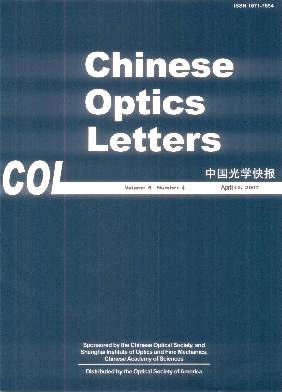Chinese Optics Letters, 2007, 5 (4): 201, Published Online: Jun. 26, 2007
Restoration of solar and star images with phase diversity-based blind deconvolution  Download: 746次
Download: 746次
图像复原 相位差法 盲解卷积 点目标 扩展目标 100.3020 Image reconstruction-restoration 100.5070 Phase retrieval 100.3190 Inverse problems 110.6770 Telescopes
Abstract
The images recorded by a ground-based telescope are often degraded by atmospheric turbulence and the aberration of the optical system. Phase diversity-based blind deconvolution is an effective post-processing method that can be used to overcome the turbulence-induced degradation. The method uses an ensemble of short-exposure images obtained simultaneously from multiple cameras to jointly estimate the object and the wavefront distribution on pupil. Based on signal estimation theory and optimization theory, we derive the cost function and solve the large-scale optimization problem using a limited memory Broyden-Fletcher-Goldfarb-Shanno (L-BFGS) method. We apply the method to the turbulence-degraded images generated with computer, the solar images acquired with the swedish vacuum solar telescope (SVST, 0.475 m) in La Palma and the star images collected with 1.2-m telescope in Yunnan Observatory. In order to avoid edge effect in the restoration of the solar images, a modified Hanning apodized window is adopted. The star image still can be restored when the defocus distance is measured inaccurately. The restored results demonstrate that the method is efficient for removing the effect of turbulence and reconstructing the point-like or extended objects.
Qiang Li, Sheng Liao, Honggang Wei, Mangzuo Shen. Restoration of solar and star images with phase diversity-based blind deconvolution[J]. Chinese Optics Letters, 2007, 5(4): 201.





